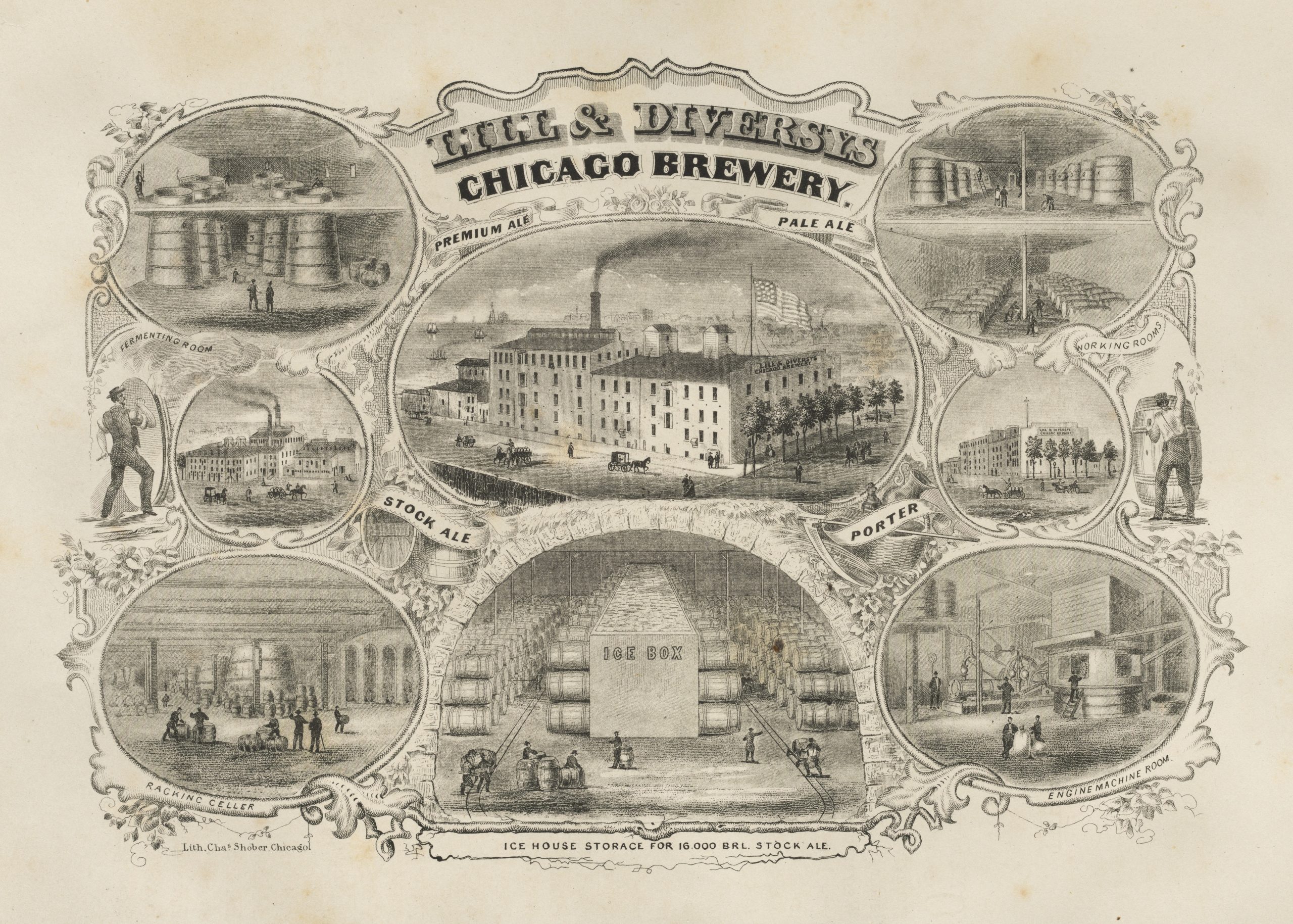
Illustrations of the Lill and Diversey’s Chicago brewery from History of Chicago: Its Commercial and Manufacturing Interests and Industry (1862) by Isaac D. Guyer. CHM, ICHi-089225
For National Beer Day, we hope you enjoy a cold one—if you’re of age, that is. The day is observed on April 7 because on that day in 1933, the Cullen-Harrison Act went into effect, amending the National Prohibition Act and allowing the manufacture and sale of beer and wine with a 3.2% alcohol content or less.
During the nineteenth century, beer making in Chicago was transformed from a small-scale, seasonal activity for local consumers into a highly mechanized big business. Outside of New York City, Chicago became the nation’s largest center of the malt liquor industry.
In 1833, German immigrants established the first brewery in Chicago. Soon renamed the Lill and Diversey’s Brewery (as seen in the illustration), it made English-style ales and porters. From 1860 to 1890, brewing underwent a profound scientific and technological revolution. Louis Pasteur’s work on beer yeast identified germs and other microorganisms as the main reason why such a large proportion of the beer went bad. The near complete domination of the industry in Chicago by German immigrants and their offspring meant that the city became a leading center of “scientific brewing,” boasting a special school, the Siebel Institute of Technology. Successful businessmen such as Conrad Seipp, Peter Schoenhofen, Michael Brand, and Charles Wacker, giants in the brewing community, underwrote the inventions that helped bring refrigeration machines to a point of commercial practicality. They also replaced the traditional brewmeister with university-trained chemists.
The malting business grew in tandem, branching off to form an important industry in its own right. Applying more and more energy in the form of heat, power, and cooling, beer making became one of the country’s most highly automated and mechanized industries, complete with assembly lines in the bottling plant. By 1900, Chicago’s sixty breweries were making over 100 million gallons a year.
Learn more about the history of beer in Chicago in our Encyclopedia of Chicago entry.